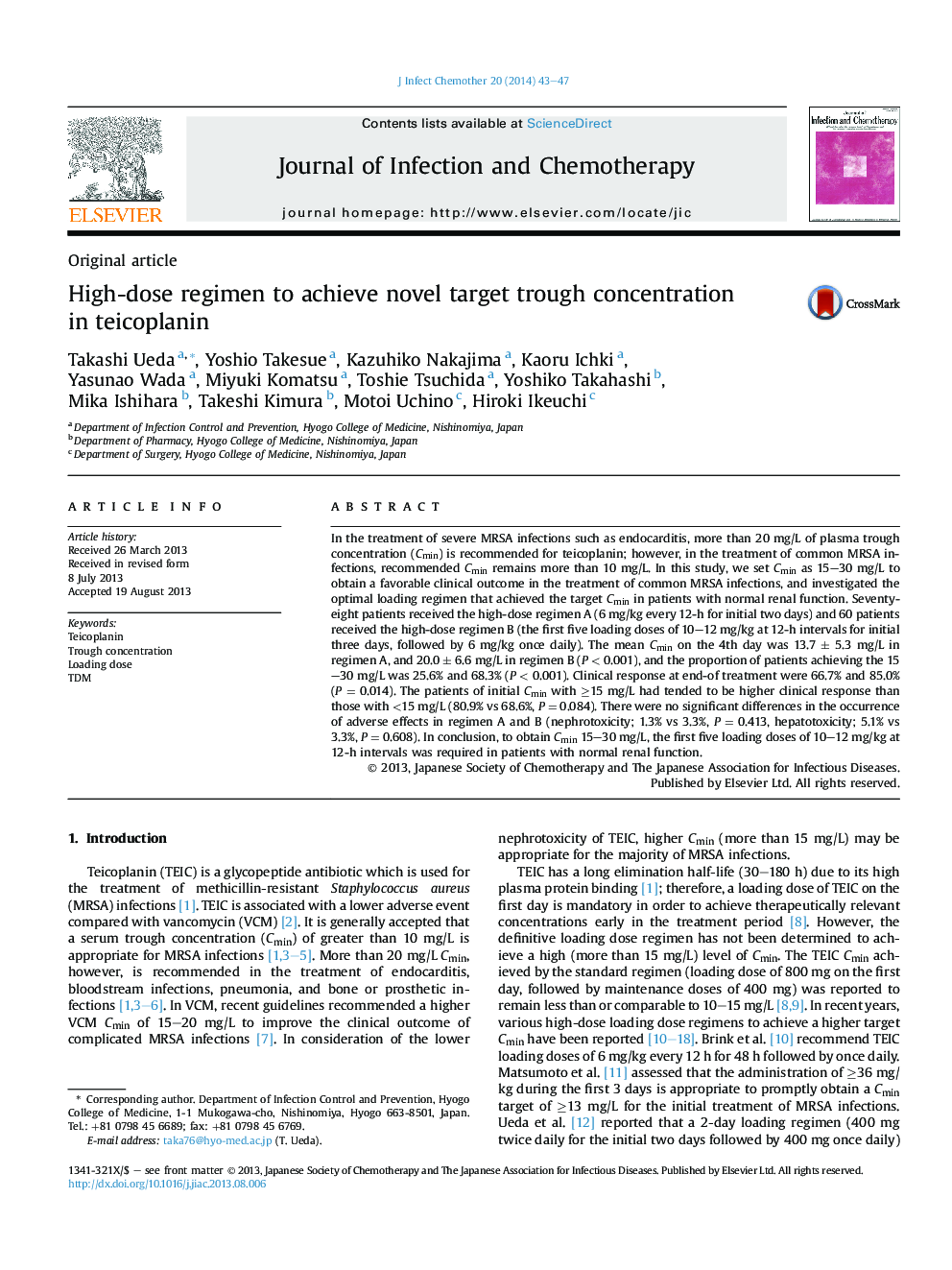| Article ID | Journal | Published Year | Pages | File Type |
|---|---|---|---|---|
| 6123880 | Journal of Infection and Chemotherapy | 2014 | 5 Pages |
Abstract
In the treatment of severe MRSA infections such as endocarditis, more than 20 mg/L of plasma trough concentration (Cmin) is recommended for teicoplanin; however, in the treatment of common MRSA infections, recommended Cmin remains more than 10 mg/L. In this study, we set Cmin as 15-30 mg/L to obtain a favorable clinical outcome in the treatment of common MRSA infections, and investigated the optimal loading regimen that achieved the target Cmin in patients with normal renal function. Seventy-eight patients received the high-dose regimen A (6 mg/kg every 12-h for initial two days) and 60 patients received the high-dose regimen B (the first five loading doses of 10-12 mg/kg at 12-h intervals for initial three days, followed by 6 mg/kg once daily). The mean Cmin on the 4th day was 13.7 ± 5.3 mg/L in regimen A, and 20.0 ± 6.6 mg/L in regimen B (P < 0.001), and the proportion of patients achieving the 15-30 mg/L was 25.6% and 68.3% (P < 0.001). Clinical response at end-of treatment were 66.7% and 85.0% (P = 0.014). The patients of initial Cmin with â¥15 mg/L had tended to be higher clinical response than those with <15 mg/L (80.9% vs 68.6%, P = 0.084). There were no significant differences in the occurrence of adverse effects in regimen A and B (nephrotoxicity; 1.3% vs 3.3%, P = 0.413, hepatotoxicity; 5.1% vs 3.3%, P = 0.608). In conclusion, to obtain Cmin 15-30 mg/L, the first five loading doses of 10-12 mg/kg at 12-h intervals was required in patients with normal renal function.
Related Topics
Life Sciences
Immunology and Microbiology
Applied Microbiology and Biotechnology
Authors
Takashi Ueda, Yoshio Takesue, Kazuhiko Nakajima, Kaoru Ichki, Yasunao Wada, Miyuki Komatsu, Toshie Tsuchida, Yoshiko Takahashi, Mika Ishihara, Takeshi Kimura, Motoi Uchino, Hiroki Ikeuchi,
